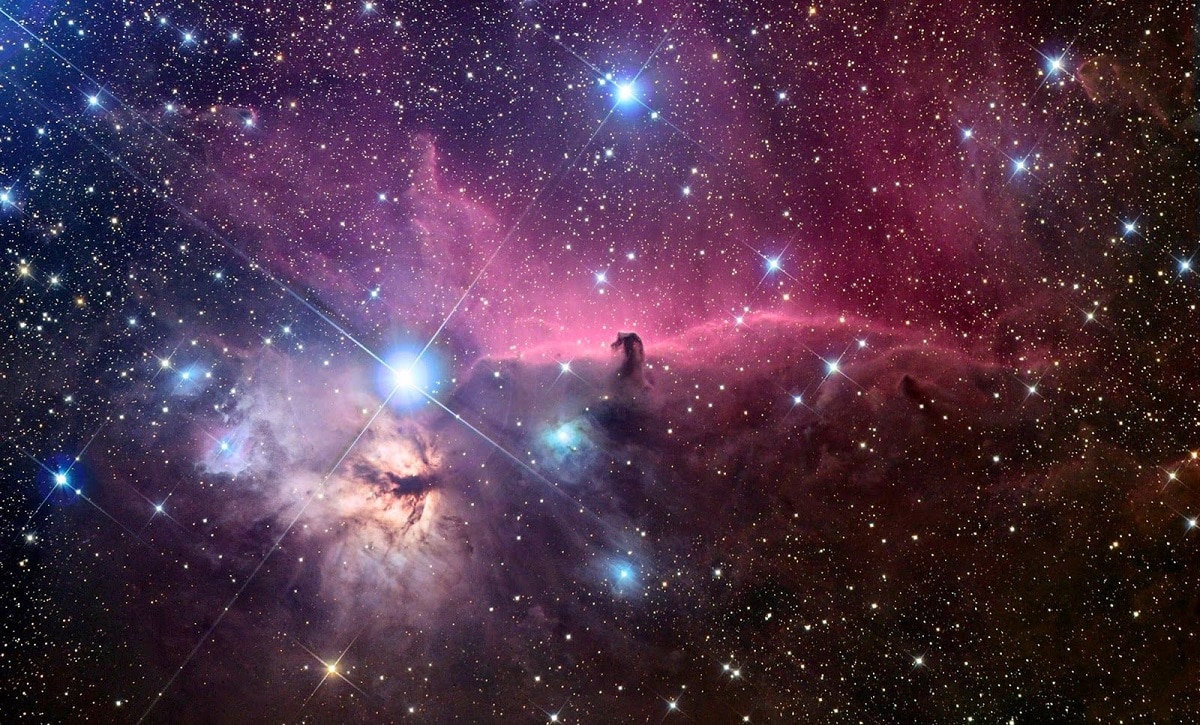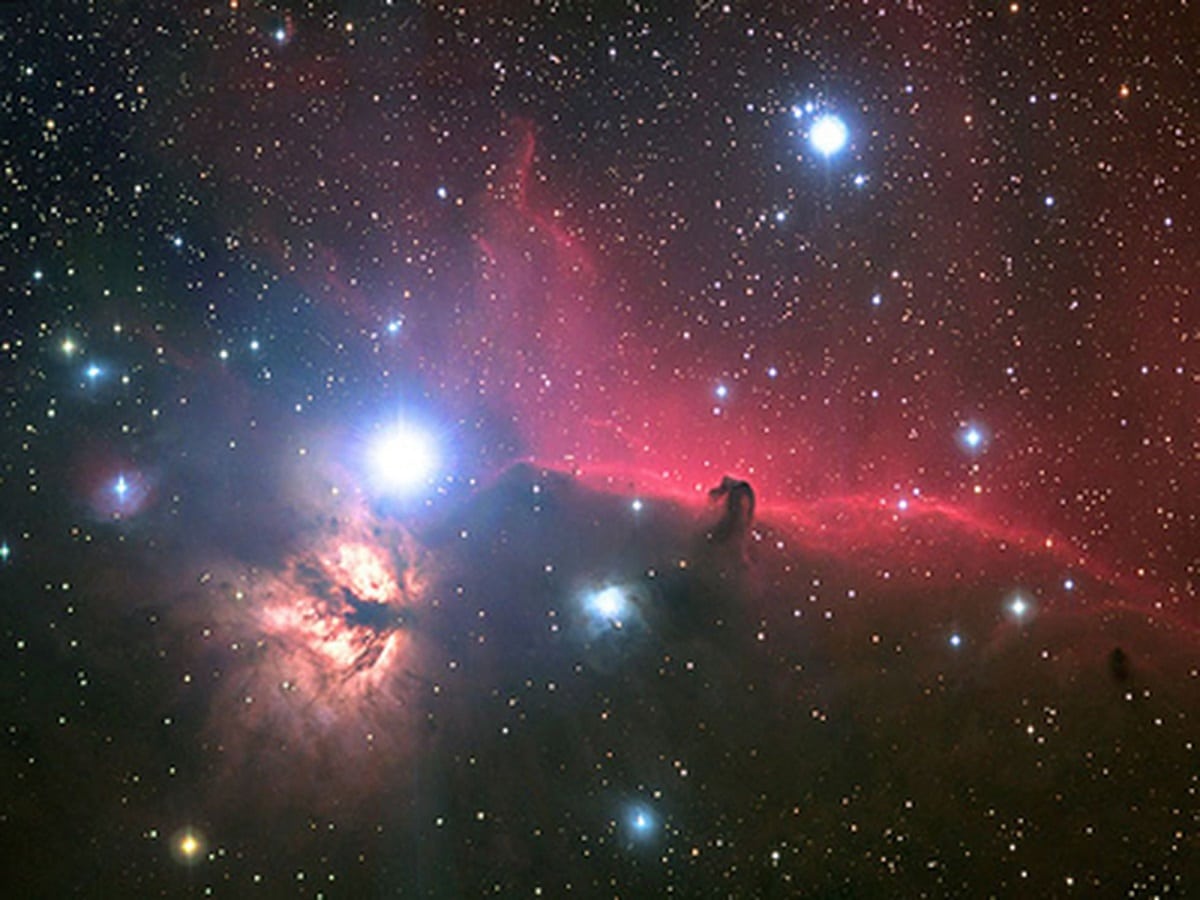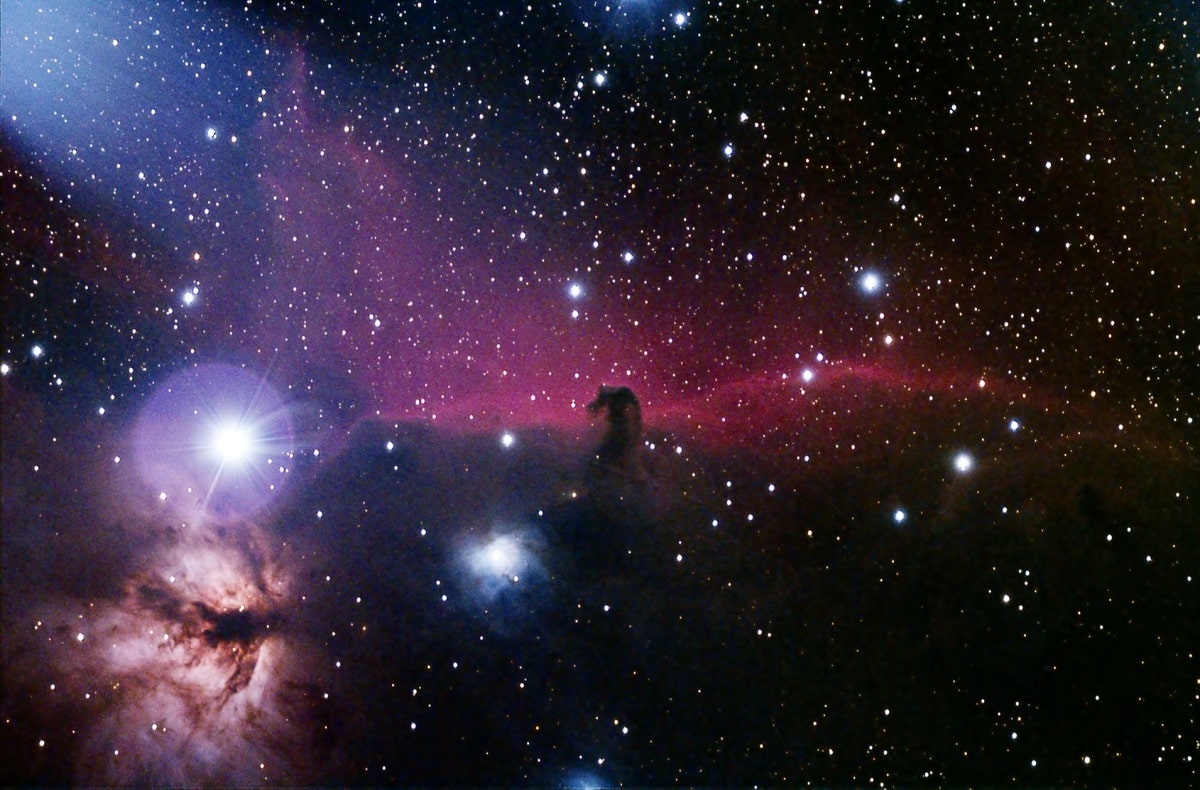
In outer space there are millions of elements that make up the universe, and astronomers are in charge of observing each element from different latitudes to determine its name, composition, shape, influence, and cause. One of these elements is the horsehead nebula. It is a nebula with a somewhat special shape.
Therefore, we are going to dedicate this article to tell you everything you need to know about the Horsehead Nebula, its characteristics, origin and much more.
Meaning

The Horsehead Nebula originally identified as Barnard 33, located in the constellation Orion, about 1.600 light-years from Earth, is a very dark, cold cloud of gas, 3,5 light-years across, first appeared in 1919 American literature and literature by astronomer Edward Emerson.
This nebula is part of the Orion Molecular Cloud Complex, and although dark in color, it is visible in exposed contrast due to its location in front of another nebula whose radiation and emission effects are scattered with a reddish tint.
Its horse-head shape resembles cloud formation in Earth's atmosphere, and it can change its appearance for thousands of light-years.
Discovery of the Horsehead Nebula

This discovery was made at the end of the 1888th century, exactly in XNUMX, when Scottish astronomer Williamina Stevens of the Hardvar College Observatory used a photographic plate consisting of a glass plate covered with a thin photosensitive layer, it quickly found itself on the film market. With less vulnerability and other advantages. At that time, the technology required for telescopes did not yet exist.
According to her biography, the author of the discovery initially worked as an assistant at the Hardwar Observatory, performing mathematical calculations, office work, etc., performing the duties of assistant director of the institution.
Even without any degree in astronomy, she was the author of many celestial discoveries that led to the creation of star catalogues. He was responsible for correcting the system for assigning letters to stars based on the hydrogen content in their spectra. Then, at the age of 30, he devoted himself to analyzing the spectra of stars.
During that time, Stevens discovered 59 gaseous nebulae, as well as variable and nova stars, up to the Horsehead Nebula, earning her the title of curator of the Hardvar Archive of Astrophotography. She highlights her work, since she was one of the first women to function properly in the astronomical community, for which she received the Guadalupe Almendaro Medal from the Mexican Astronomical Society.
Orion's belt
In this type of article it is necessary to describe some frequently used terms in astronomy, which deserve a separate section for a better understanding by the reader. On this occasion we enter the topic of the Belt of Orion, it is nothing more than a group of stars that appear to be arranged in a geometric pattern from Earth.
Orions are three very bright stars known in popular culture as the Three Marys or the Three Wise Men, but their scientific names are actually Alnitak, Alnilam and Mintaka, and they are observed from November to the end of May.
Features of the Horsehead Nebula

The famous Horsehead Nebula represents a dark, non-luminous cloud of dust and gas, its outline obscured by light from IC 434 behind it. IC 434, in turn, draws all its power from the bright star Sigma Orionis. Rising from its misty mother, The Horsehead Nebula is a truly dynamic structure and a fascinating laboratory of complex physics.
As it expands into the region of the interstellar medium surrounding the nebula, it comes under pressure that leads to the formation of low-mass stars. On the horse's forehead, a child star partially shrouded in sparkles can be seen. The small reddish objects shining through the dust represent Herbig-Haro objects, which glow from material ejected by unseen protostars. The surrounding area also contains many different objects, each with their own uniqueness. The bright emission nebula in the lower right is NGC 2024 (the Flame Nebula).
Infrared surveys have revealed a large population of newborn stars hidden behind the dust and gas of NGC 2024. The bright blue reflection nebula to the lower right of the Horsehead Nebula is NGC 2023. Interstellar dust reveals its presence by blocking the light from stars or the nebula behind them. The dust consists mainly of carbon, silicon, oxygen and some heavier elements. Even organic compounds were detected.
One of the brightest reflection nebulae in the sky, NGC 2023 lies to the east of the Horsehead Nebula and forms a fine bubble at the edge of the L1630 molecular cloud. The B-type star HD37903, with a surface temperature of 22.000 degrees, is responsible for the excitation of most of the gas and dust within NGC 2023, located in front of the molecular cloud. A unique feature of NGC 2023 is the presence of a neutral hydrogen (H2) bubble. around HD37903 with a radius of about 0,65 light-years.
Types of nebulae in Orion's belt
There are four nebulae in Orion's belt; the first is the Horsehead, followed by the Flame Nebula, IC-434⁵ and Messier 78⁷.
flame nebula
Originally known by the acronym NGC2024, it is a nebula whose hydrogen atoms are continually photoionized by the star Alnitkm, producing a reddish luminosity as soon as electrons bind to the atoms, as shown below.
According to a team of scientists currently studying the nebula, there are objects in its vicinity that could be considered gas planets, however, observations of these continue through the use of the Hubble Telescope and other precision measuring instruments.
CI-434
It receives ionizing radiation from a star called 48 Orionis, which makes it appear elongated and, due to its properties, allows us to contrast the observations of the Horsehead Nebula. The Belt Nebula in Orion is an important and bright member of the huge Orion Association.
The scientists explained that the temperature of this region can be measured using a number of techniques with radiometric scales that contribute to the values it handles today in the Orion Belt Nebula record specifications.
Messier 78
Also known as MGC 2068, it is also known as a reflection nebula due to the blue tint that glows in its luminosity, and It was discovered by Pier Merchain in 1780.
The brightest nebula easily visible with any optical telescope, it is home to two stars that are responsible for forming the dust cloud above Messier 78, making it visible. The two stars have been named HD 38563A and HD 38563B, respectively. According to the scientists who study these nebulae, there are a large number of uninhabited planets with certain resources distributed around this object, which is located in the extreme left of Orion's belt in the south.
I hope that with this information you can learn more about the Horsehead Nebula and its characteristics.
AS A MATH TEACHER – ASTRONOMY WAS IN THE PROGRAM IN THE LAST CHAPTER – I TAUGHT IT AT THE END OF THE YEAR – SENIOR YEAR. IN 1986 WE SAW HALLEY'S COMET – PUERTO DESEADO – SANTA CRUZ – ARGENTINA THANK YOU!